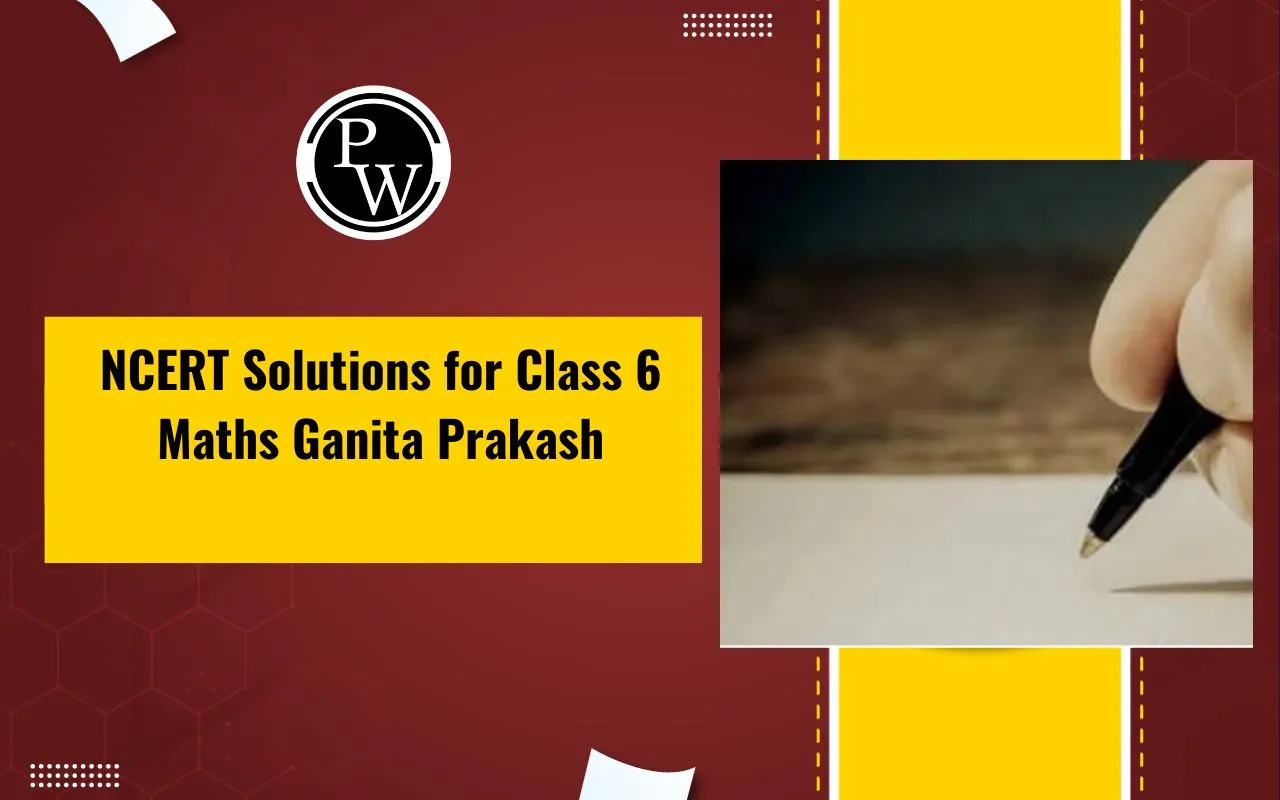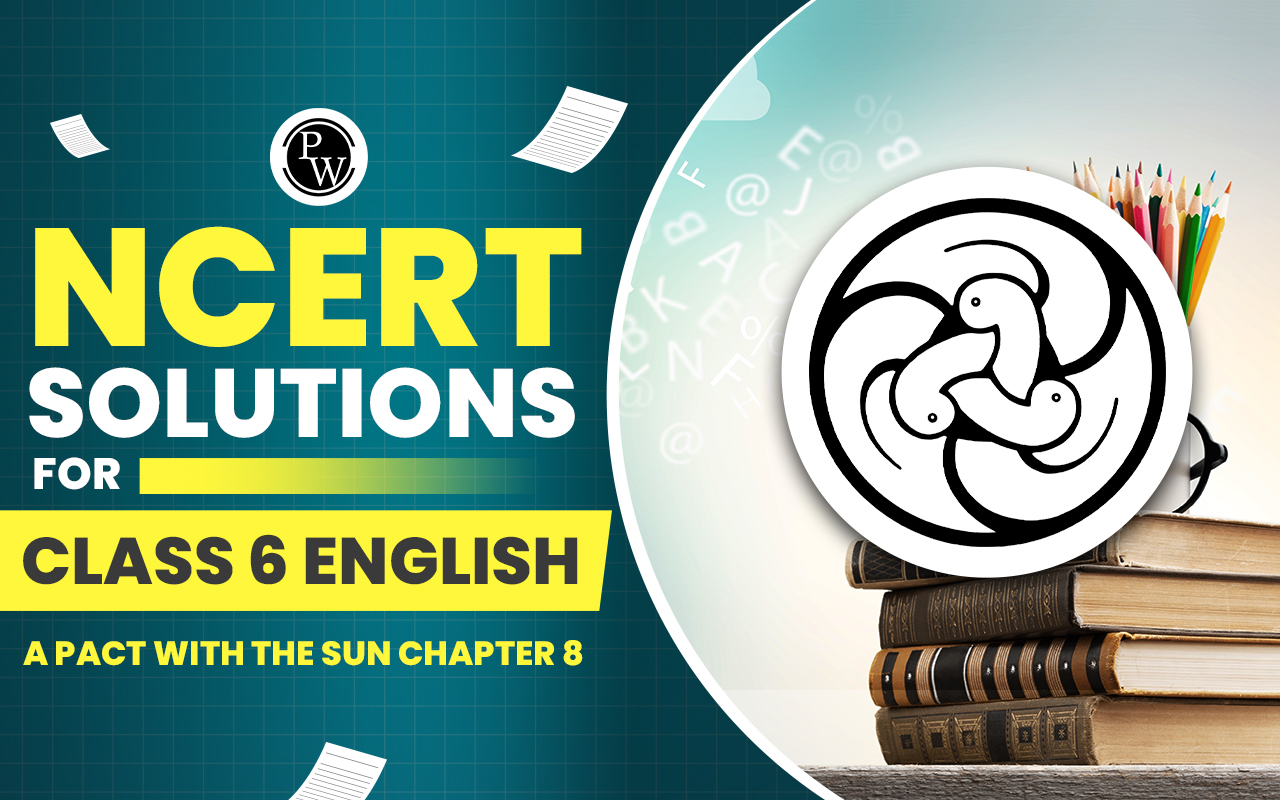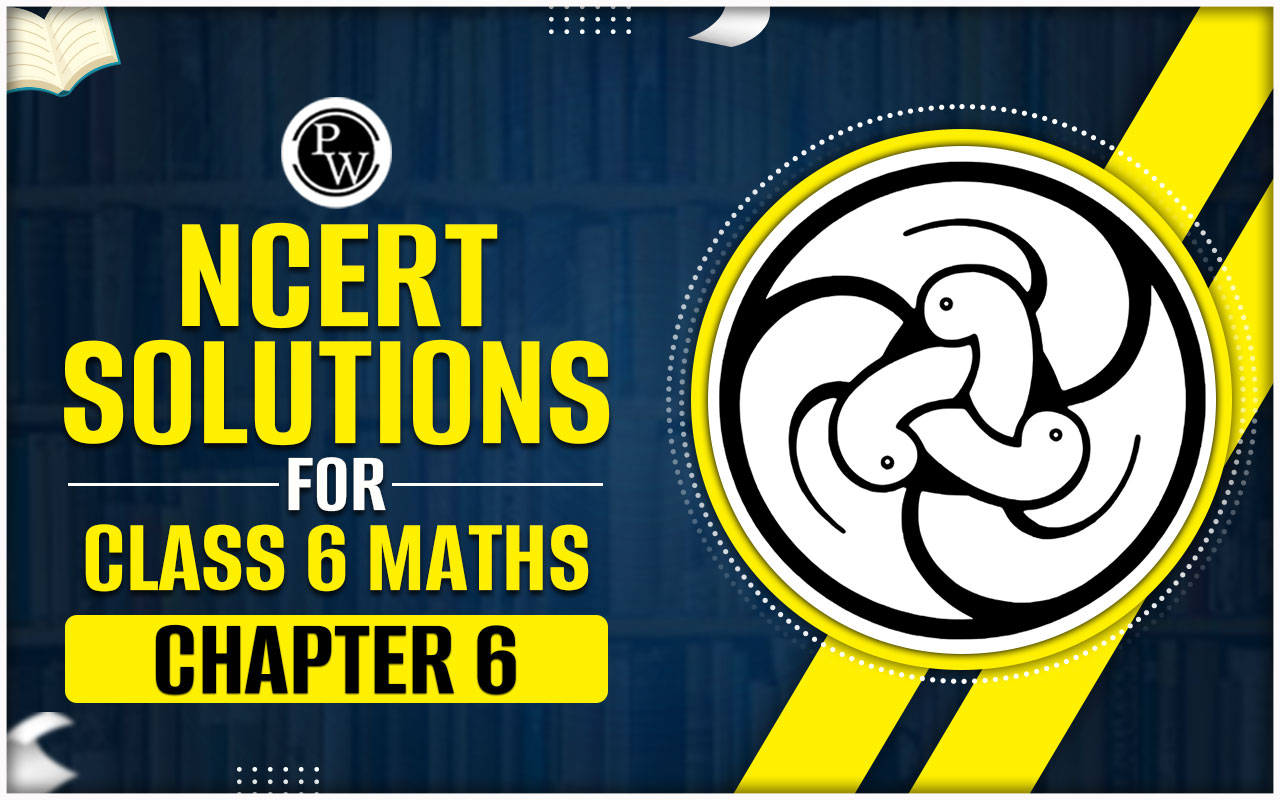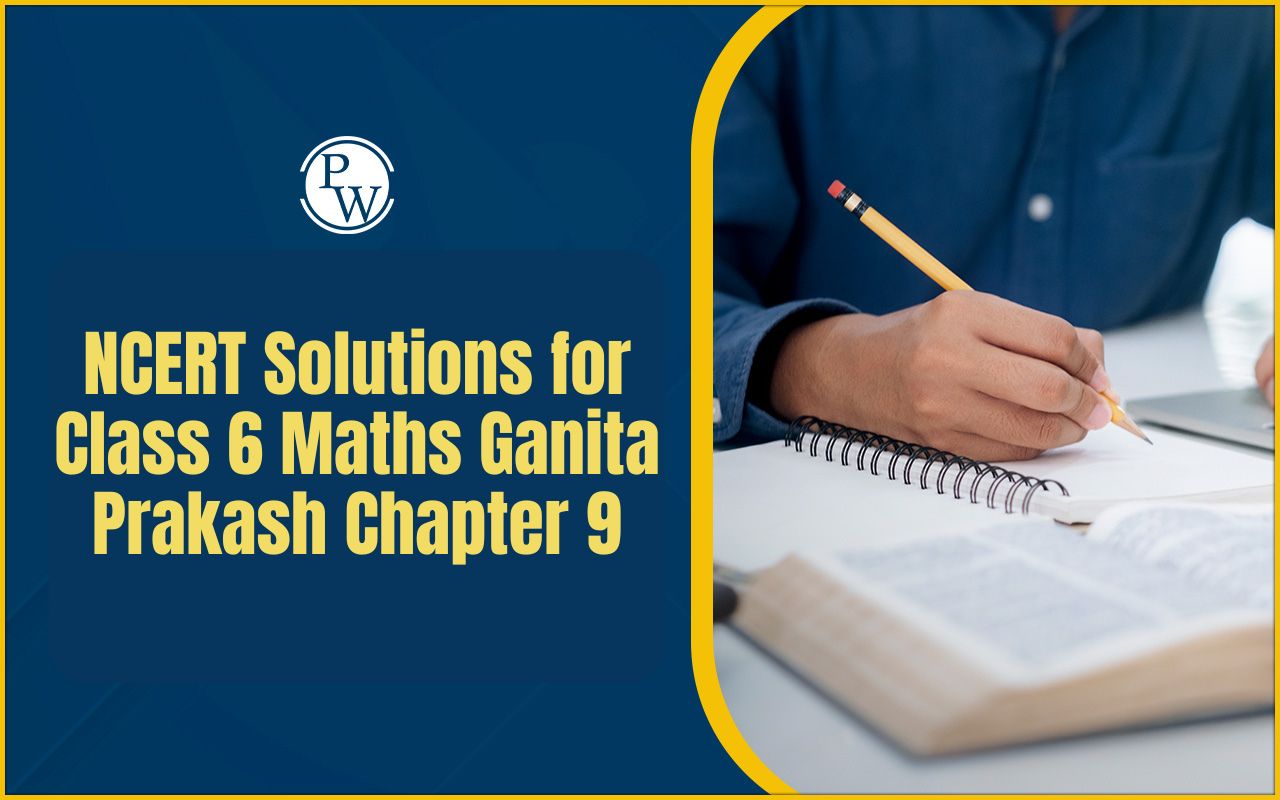
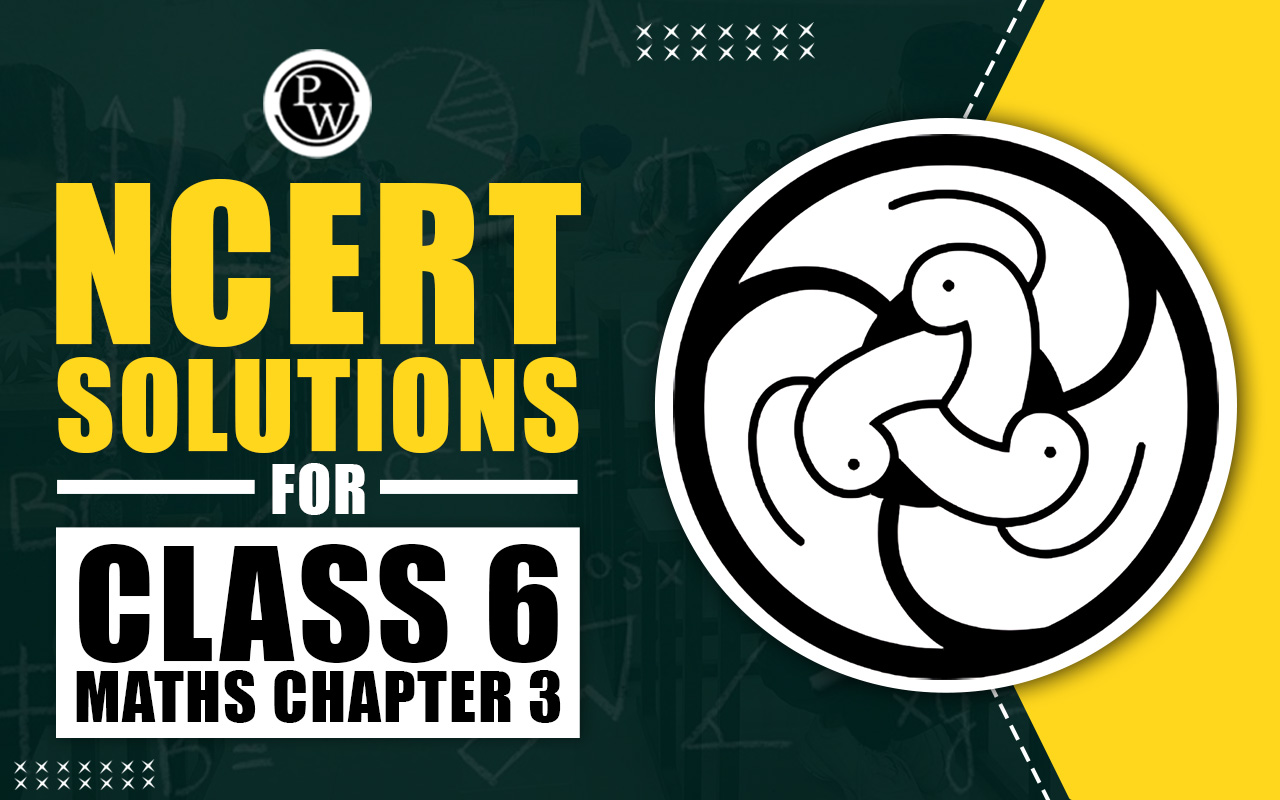
NCERT Solutions for Class 6 Maths Chapter 3
NCERT Solutions for Class 6 Maths Chapter 3: The NCERT Solutions for Class 6 Maths Chapter 3 Playing With Numbers are beneficial for exam readiness as they cover various questions in the seven exercises of this chapter. At PhysicsWallah, subject experts crafted these solutions to offer the best methods for problem-solving. They serve as excellent study materials for CBSE Class 6 students aiming for good marks in the Maths Examination. The chapter delves into multiples, divisors, factors, and how to recognize them, and introduces concepts like HCF and LCM. Resolving the problems in this chapter aids students in understanding number-related topics easily.NCERT Solutions for Class 6 Maths Chapter 3 Overview
When students enter the 6th standard, they encounter the diverse syllabus of NCERT Solutions for Class 6 Maths Chapter 3, which includes various topics. The chapter, Playing with Numbers, concentrates on teaching multiples and divisors. As the chapter unfolds, students learn about common factors, multiples, divisibility rules, highest common factors, lowest common factors, etc. A thorough understanding of the chapter helps students discern prime and composite numbers. Students can download NCERT Class 6 Maths and NCERT Class 6 Science to revise the complete syllabus and score higher marks.NCERT Solutions for Class 6 Maths Chapter 3 PDF Download
The chapter covers factors, multiples, prime and composite numbers, divisibility tests, common factors, common multiples, prime factorization, highest common factor, lowest common multiple, and related problems. Specific problems related to these topics are divided into 7 exercises for easy identification.NCERT Solutions for Class 6 Maths Chapter 3 Playing With Numbers
By using NCERT solutions for Class 6 Maths Chapter 3, students can get ready for their exams more easily. The solved examples given here assist students in figuring out the steps for solving similar problems. Additionally, these examples help students grasp fundamental knowledge that will be handy in the future. These solutions aid in understanding the important role played by various numbers and their multiples in solving equations. The formulas introduced in this chapter are basic equations that will become handy when students progress to solving more complicated problems.NCERT Solutions for Class 6 Maths Chapter 3 Exercise 3.1
1. Write all the factors of the following numbers:
(a) 24
(b) 15
(c) 21
(d) 27
(e) 12
(f) 20
(g) 18
(h) 23
(i) 36
Solution: (a) 24 = 1 x 24 24 = 2 x 12 24 = 3 x 8 24 = 4 x 6 The factors of 24 are: 1, 2, 3, 4, 6, 8, 12, and 24. (b) 15 = 1 x 15 15 = 3 x 5 The factors of 15 are: 1, 3, 5, and 15. (c) 21 = 1 x 21 21 = 3 x 7 The factors of 21 are: 1, 3, 7, and 21. (d) 27 = 1 x 27 27 = 3 x 9 The factors of 27 are: 1, 3, 9, and 27. (e) 12 = 1 x 12 12 = 2 x 6 12 = 3 x 4 The factors of 12 are: 1, 2, 3, 4, 6, and 12. (f) 20 = 1 x 20 20 = 2 x 10 20 = 4 x 5 The factors of 20 are: 1, 2, 4, 5, 10, and 20. (g) 18 = 1 x 18 18 = 2 x 9 18 = 3 x 6 The factors of 18 are: 1, 2, 3, 6, 9, and 18. (h) 23 = 1 x 23 The factors of 23 are: 1 and 23. (i) 36 = 1 x 36 36 = 2 x 18 36 = 3 x 12 36 = 4 x 9 36 = 6 x 6 The factors of 36 are: 1, 2, 3, 4, 6, 9, 12, 18, and 36. 2. Write the first five multiples of:(a) 5
(b) 8
(c) 9
Solution: (a) First five multiples of 5 are: 5 x 1 = 5 5 x 2 = 10 5 x 3 = 15 5 x 4 = 20 5 x 5 = 25 Therefore, five multiples of 5 are: 5, 10, 15, 20, and 25. (b) First five multiples of 8 are: 8 x 1 = 8; 8 x 2 = 16; 8 x 3 = 24; 8 x 4 = 32; 8 x 5 = 40 Therefore, five multiples of 8 are: 8, 16, 24, 32, and 40. (c) First five multiples of 9 are: 9 x 1 = 9; 9 x 2 = 18; 9 x 3 = 27; 9 x 4 = 36; 9 x 5 = 45 Therefore, five multiples of 9 are: 9, 18, 27, 36, and 45. 3. Match the items in column 1 with the items in column 2.Column 1 Column 2
(i) 35 (a) Multiple of 8 (ii) 15 (b) Multiple of 7 (iii) 16 (c) Multiple of 70 (iv) 20 (d) Factor of 30 (v) 25 (e) Factor of 50 Solution: (i) 35 (b) Multiple of 7 (ii) 15 (d) Factor of 30 (iii) 16 (a) Multiple of 8 (iv) 20 (f) Factor of 20 (v) 25 (e) Factor of 50 4. Find all the multiples of 9 up to 100. Solution: 9 x 1 = 9 9 x 2 = 18 9 x 3 = 27 9 x 4 = 36 9 x 5 = 45 9 x 6 = 54 9 x 7 = 63 9 x 8 = 72 9 x 9 = 81 9 x 10 = 90 9 x 11 = 99 Therefore, all the multiples of 9 up to 100 are: 9, 18, 27, 36, 45, 54, 63, 72, 81, 90, and 99.CBSE Board Exam Centre List 2024
NCERT Solutions for Class 6 Maths Chapter 3 Exercise 3.2
1. What is the sum of any two (a) Odd numbers? (b) Even numbers?
Solutions: (a) The sum of any two odd numbers is an even number. Examples: 5 + 3 = 8 15 + 13 = 28 (b) The sum of any two even numbers is an even number Examples: 2 + 8 = 10 12 + 28 = 40 2. State whether the following statements are True or False: (a) The sum of three odd numbers is even. (b) The sum of two odd numbers and one even number is even. (c) The product of three odd numbers is odd. (d) If an even number is divided by 2, the quotient is always odd. (e) All prime numbers are odd. (f) Prime numbers do not have any factors. (g) Sum of two prime numbers is always even. (h) 2 is the only even prime number. (i) All even numbers are composite numbers. (j) The product of two even numbers is always even. Solutions: (a) False. The sum of three odd numbers is odd. Example: 7 + 9 + 5 = 21 i.e odd number (b) True. The sum of two odd numbers and one even number is even. Example: 3 + 5 + 8 = 16 i.e., is an even number. (c) True. The product of three odd numbers is odd. Example: 3 × 7 × 9 = 189 i.e., is an odd number. (d) False. If an even number is divided by 2, the quotient is even. Example: 8 ÷ 2 = 4 (e) False, All prime numbers are not odd. Example: 2 is a prime number, but it is also an even number. (f) False. Since 1 and the number itself are factors of the number (g) False. The sum of two prime numbers may also be an odd number Example: 2 + 5 = 7 i.e., an odd number. (h) True. 2 is the only even prime number. (i) False. Since 2 is a prime number. (j) True. The product of two even numbers is always even. Example: 2 × 4 = 8 i.e., even number. 3. The numbers 13 and 31 are prime numbers. Both these numbers have the same digits, 1 and 3. Find such pairs of prime numbers up to 100. Solutions: The prime numbers with the same digits up to 100 are as follows: 17 and 71 37 and 73 79 and 97 4. Write down separately the prime and composite numbers less than 20. Solutions: 2, 3, 5, 7, 11, 13, 17 and 19 are the prime numbers less than 20 4, 6, 8, 9, 10, 12, 14, 15, 16 and 18 are the composite numbers less than 20 5. What is the greatest prime number between 1 and 10? Solutions: 2, 3, 5 and 7 are the prime numbers between 1 and 10. 7 is the greatest prime number among them. 6. Express the following as the sum of two odd primes. (a) 44 (b) 36 (c) 24 (d) 18 Solutions: (a) 3 + 41 = 44 (b) 5 + 31 = 36 (c) 5 + 19 = 24 (d) 5 + 13 = 18 7. Give three pairs of prime numbers whose difference is 2. [Remark: Two prime numbers whose difference is 2 are called twin primes]. Solutions: The three pairs of prime numbers whose difference is 2 are 3, 5 5, 7 11, 13 8. Which of the following numbers is prime? (a) 23 (b) 51 (c) 37 (d) 26 Solutions: (a) 23 1 × 23 = 23 23 × 1 = 23 Therefore 23 has only two factors 1 and 23. Hence, it is a prime number. (b) 51 1 × 51 = 51 3 × 17 = 51 Therefore 51 has four factors 1, 3, 17 and 51. Hence, it is not a prime number, it is a composite number. (c) 37 1 × 37 = 37 37 × 1 = 37 Therefore 37 has two factors 1 and 37. Hence, it is a prime number. (d) 26 1 × 26 = 26 2 × 13 = 26 Therefore 26 has four factors 1, 2, 13 and 26. Hence, it is not a prime number, it is a composite number. 9. Write seven consecutive composite numbers less than 100 so there is no prime number between them. Solutions: Seven composite numbers between 89 and 97, both of which are prime numbers, are 90, 91, 92, 93, 94, 95 and 96Numbers Factors
90 1, 2, 3, 5, 6, 9, 10, 15, 18, 30, 45, 91 1, 7, 13, 91 92 1, 2, 4, 23, 46, 92 93 1, 3, 31, 93 94 1, 2, 47, 94 95 1, 5, 19, 95 96 1, 2, 3, 4, 6, 8, 12, 16, 24, 32, 4810. Express each of the following numbers as the sum of three odd primes:
(a) 21 (b) 31 (c) 53 (d) 61 Solutions: (a) 3 + 5 + 13 = 21 (b) 3 + 5 + 23 = 31 (c) 13 + 17 + 23= 53 (d) 7 + 13 + 41 = 61 11. Write five pairs of prime numbers less than 20 whose sum is divisible by 5. (Hint: 3 + 7 = 10) Solutions: The five pairs of prime numbers less than 20 whose sum is divisible by 5 are 2 + 3 = 5 2 + 13 = 15 3 + 17 = 20 7 + 13 = 20 19 + 11 = 3012. Fill in the blanks:
(a) A number with only two factors is called a ______. (b) A number with more than two factors is called a ______. (c) 1 is neither ______ nor ______. (d) The smallest prime number is ______. (e) The smallest composite number is _____. (f) The smallest even number is ______. Solutions: (a) A number with only two factors is called a prime number. (b) A number with more than two factors is called a composite number. (c) 1 is neither a prime number nor a composite number. (d) The smallest prime number is 2 (e) The smallest composite number is 4 (f) The smallest even number is 2.| CBSE Syllabus Class 6 | |
| CBSE Class 6 Science Syllabus | CBSE Class 6 Maths Syllabus |
| CBSE Class 6 Social Science Syllabus | CBSE Class 6 English Syllabus |
NCERT Solutions for Class 6 Maths Chapter 3 Exercise 3.3
1. Using divisibility tests, determine which of the following numbers are divisible by 2; by 3; by 4; by 5; by 6; by 8; by 9; by 10; by 11 (say, yes or no):
Solutions: 2. Using divisibility tests, determine which of the following numbers are divisible by 4; by 8: (a) 572 (b) 726352 (c) 5500 (d) 6000 (e) 12159 (f) 14560 (g) 21084 (h) 31795072 (i) 1700 (j) 2150 Solutions: (a) 572 72 are the last two digits. Since 72 is divisible by 4. Hence, 572 is also divisible by 4 572 are the last three digits. Since 572 is not divisible by 8. Hence, 572 is not divisible by 8 (b) 726352 52 are the last two digits. Since 52 is divisible by 4. Hence, 726352 is divisible by 4 352 are the last three digits. Since 352 is divisible by 8. Hence, 726352 is divisible by 8 (c) 5500 Since the last two digits are 00. Hence 5500 is divisible by 4 500 are the last three digits. Since 500 is not divisible by 8. Hence, 5500 is not divisible by 8 (d) 6000 Since the last two digits are 00. Hence 6000 is divisible by 4 Since the last three digits are 000. Hence, 6000 is divisible by 8 (e) 12159 59 are the last two digits. Since 59 is not divisible by 4. Hence, 12159 is not divisible by 4 159 are the last three digits. Since 159 is not divisible by 8. Hence, 12159 is not divisible by 8 (f) 14560 60 are the last two digits. Since 60 is divisible by 4. Hence, 14560 is divisible by 4 560 are the last three digits. Since 560 is divisible by 8. Hence, 14560 is divisible by 8 (g) 21084 84 are the last two digits. Since 84 is divisible by 4. Hence, 21084 is divisible by 4 084 are the last three digits. Since 084 is not divisible by 8. Hence, 21084 is not divisible by 8 (h) 31795072 72 are the last two digits. Since 72 is divisible by 4. Hence, 31795072 is divisible by 4 072 are the last three digits. Since 072 is divisible by 8. Hence, 31795072 is divisible by 8 112 (i) 1700 Since the last two digits are 00. Hence, 1700 is divisible by 4 700 are the last three digits. Since 700 is not divisible by 8. Hence, 1700 is not divisible by 8 (j) 2150 50 are the last two digits. Since 50 is not divisible by 4. Hence, 2150 is not divisible by 4 150 are the last three digits. Since 150 is not divisible by 8. Hence, 2150 is not divisible by 8 3. Using divisibility tests, determine which of the following numbers are divisible by 6: (a) 297144 (b) 1258 (c) 4335 (d) 61233 (e) 901352 (f) 438750 (g) 1790184 (h) 12583 (i) 639210 (j) 17852 Solutions: (a) 297144 Since the last digit of the number is 4. Hence, the number is divisible by 2 By adding all the digits of the number, we get 27, which is divisible by 3. Hence, the number is divisible by 3 ∴ The number is divisible by both 2 and 3. Hence, the number is divisible by 6 (b) 1258 Since the last digit of the number is 8. Hence, the number is divisible by 2 By adding all the digits of the number, we get 16 which is not divisible by 3. Hence, the number is not divisible by 3 ∴ The number is not divisible by both 2 and 3. Hence, the number is not divisible by 6 (c) 4335 Since the last digit of the number is 5, which is not divisible by 2. Hence, the number is not divisible by 2 By adding all the digits of the number, we get 15 which is divisible by 3. Hence, the number is divisible by 3 ∴ The number is not divisible by both 2 and 3. Hence, the number is not divisible by 6 (d) 61233 Since the last digit of the number is 3, which is not divisible by 2. Hence, the number is not divisible by 2 By adding all the digits of the number, we get 15 which is divisible by 3. Hence, the number is divisible by 3 ∴ The number is not divisible by both 2 and 3. Hence, the number is not divisible by 6 (e) 901352 Since the last digit of the number is 2. Hence, the number is divisible by 2 By adding all the digits of the number, we get 20 which is not divisible by 3. Hence, the number is not divisible by 3 ∴ The number is not divisible by both 2 and 3. Hence, the number is not divisible by 6 (f) 438750 Since the last digit of the number is 0. Hence, the number is divisible by 2 By adding all the digits of the number, we get 27 which is divisible by 3. Hence, the number is divisible by 3 ∴ The number is divisible by both 2 and 3. Hence, the number is divisible by 6 (g) 1790184 Since the last digit of the number is 4. Hence, the number is divisible by 2 By adding all the digits of the number, we get 30 which is divisible by 3. Hence, the number is divisible by 3 ∴ The number is divisible by both 2 and 3. Hence, the number is divisible by 6 (h) 12583 Since the last digit of the number is 3. Hence, the number is not divisible by 2 By adding all the digits of the number, we get 19 which is not divisible by 3. Hence, the number is not divisible by 3 ∴ The number is not divisible by both 2 and 3. Hence, the number is not divisible by 6 (i) 639210 Since the last digit of the number is 0. Hence, the number is divisible by 2 By adding all the digits of the number, we get 21, which is divisible by 3. Hence, the number is divisible by 3 ∴ The number is divisible by both 2 and 3. Hence, the number is divisible by 6 (j) 17852 Since the last digit of the number is 2. Hence, the number is divisible by 2 By adding all the digits of the number, we get 23 which is not divisible by 3. Hence, the number is not divisible by 3 ∴ The number is not divisible by both 2 and 3. Hence, the number is not divisible by 6Benefits of NCERT Solutions for Class 6 Maths Chapter 3
Here are some of the main benefits of using NCERT Solutions for Class 6 Maths Chapter 3:- The solutions are designed according to the exam pattern, aiding students in achieving good scores.
- All questions and answers are written in easy language.
- The answers to each question are clear and concise.
- All solutions are helpful and efficient in assisting students to score well.
| Related links |
NCERT Solutions for Class 6 Maths Chapter 3 FAQs
What does NCERT Class 6 Maths Chapter 3 cover?
NCERT Class 6 Maths Chapter 3 focuses on playing with numbers, exploring concepts such as factors, multiples, and prime numbers.
Why should one use Chapter 3 Maths Class 6 NCERT Solutions?
Availing Chapter 3 Maths Class 6 NCERT Solutions is beneficial for comprehending fundamental mathematical concepts, ensuring a strong foundation for future topics.
How do Factors and Multiples differ?
Factors are numbers that completely divide a given number, while multiples are the result of multiplying a number by any integer.
What distinguishes Prime and Composite numbers?
Prime numbers have only two factors (1 and the number itself), whereas composite numbers have more than two factors.
Why is Class 6 Maths Chapter 3 significant for higher studies?
Class 6 Maths Chapter 3 lays the groundwork for understanding essential concepts like factors and primes, forming a basis for advanced mathematical topics in higher studies.
Talk to a counsellorHave doubts? Our support team will be happy to assist you!

Free Learning Resources
PW Books
Notes (Class 10-12)
PW Study Materials
Notes (Class 6-9)
Ncert Solutions
Govt Exams
Class 6th to 12th Online Courses
Govt Job Exams Courses
UPSC Coaching
Defence Exam Coaching
Gate Exam Coaching
Other Exams
Know about Physics Wallah
Physics Wallah is an Indian edtech platform that provides accessible & comprehensive learning experiences to students from Class 6th to postgraduate level. We also provide extensive NCERT solutions, sample paper, NEET, JEE Mains, BITSAT previous year papers & more such resources to students. Physics Wallah also caters to over 3.5 million registered students and over 78 lakh+ Youtube subscribers with 4.8 rating on its app.
We Stand Out because
We provide students with intensive courses with India’s qualified & experienced faculties & mentors. PW strives to make the learning experience comprehensive and accessible for students of all sections of society. We believe in empowering every single student who couldn't dream of a good career in engineering and medical field earlier.
Our Key Focus Areas
Physics Wallah's main focus is to make the learning experience as economical as possible for all students. With our affordable courses like Lakshya, Udaan and Arjuna and many others, we have been able to provide a platform for lakhs of aspirants. From providing Chemistry, Maths, Physics formula to giving e-books of eminent authors like RD Sharma, RS Aggarwal and Lakhmir Singh, PW focuses on every single student's need for preparation.
What Makes Us Different
Physics Wallah strives to develop a comprehensive pedagogical structure for students, where they get a state-of-the-art learning experience with study material and resources. Apart from catering students preparing for JEE Mains and NEET, PW also provides study material for each state board like Uttar Pradesh, Bihar, and others
Copyright © 2025 Physicswallah Limited All rights reserved.







